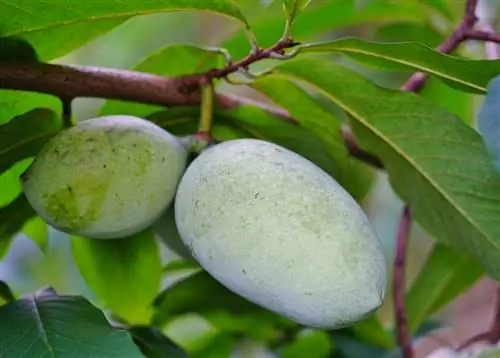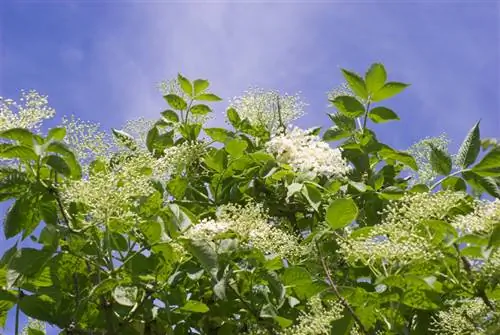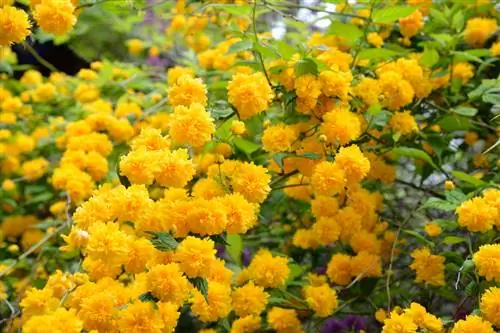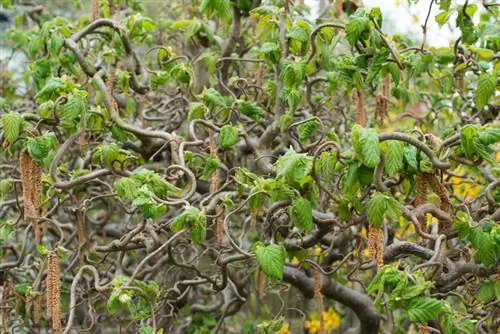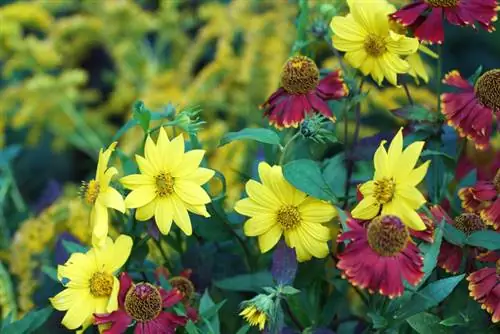- Author admin [email protected].
- Public 2023-12-16 16:46.
- Last modified 2025-06-01 06:02.
Asimina triloba or three-lobed papau is the name for a North American plant whose fruits taste exotic like banana, mango, pineapple and vanilla. It is also known as the Indian banana and is a very interesting animal and useful plant.
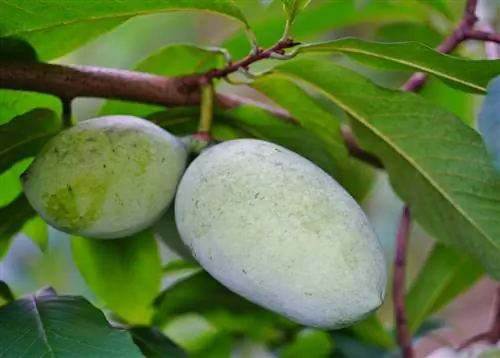
How do I properly care for an Asimina triloba plant?
When caring for Asimina triloba, the Indian banana, a sunny location is important. It prefers a permeable, humus-rich, slightly moist and rather acidic soil. Water regularly and use nitrogen-containing fertilizer for optimal growth and fruiting.
Choose the right location
The Indian banana is very temperature tolerant, it can tolerate both heat up to around 35 °C and frost up to around -25 °C. It feels at home where apricots or peaches grow well and prefers a sunny location. However, young plants thrive better in partial shade. They should also be protected from severe frost in winter.
The best soil for the Indian banana
The soil for your Indian banana should be permeable and humus-rich, but also a little moist and preferably slightly acidic. A mixture of sand, clay (€22.00 on Amazon), lava grit and compost is ideal. Even if the Indian banana doesn't like to be transplanted, it can be cultivated in a pot for the first few years. However, this should be deep enough due to the taproot.
Water and fertilize the Indian banana properly
The Indian banana is quite frugal and can get by with little water if necessary. However, you can hardly expect adequate growth, even if it can get nutrients and moisture from deep in the ground thanks to its taproot. During a longer dry period, you should water your Indian banana better. A nitrogen-rich fertilizer is recommended as a nutrient.
The harvest and use of the Indian banana
Only if there is enough sun and dryness will your Indian banana actually produce fruit that is ready to harvest. Around October the fruits turn yellow and soft, then the harvest season begins. The halved fruits are easy to scoop out, the flesh is nice and creamy and very tasty. You can also use the Indian banana to make alcoholic drinks or jam and bake cakes with it.
The most important things in brief:
- Location: sunny
- Tolerates temperatures between - 25 °C and + 35 °C
- Soil: permeable, humic, slightly moist, rather acidic
- Water and nutrient requirements: rather high
- Fertilizer: containing nitrogen
- Fruits: edible, very tasty, versatile
Tip
The robust and resilient Indian banana is suitable both as a useful plant and for the ornamental garden. The fruits taste slightly different depending on the type.

